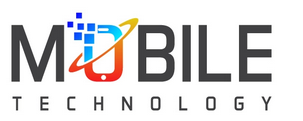The search engine optimization (SEO) of a website on a given semantic perimeter is based on 3 essential pillars: technical compatibility with Google’s criteria, the number of content rich in keywords on the perimeter in question and finally popularity, ie the number of trusted and renowned links pointing to your showcase website . The concentration of content related to the searches of Internet users is fundamental, and will require using all the diversity of the lexical field of the subject on which you wish to optimize your Google positioning.
Popularity is the most difficult axis to work on, because it does not depend only on you. But if there is one axis on which you are not entitled to any error for your SEO , because it is a bit of the union minimum, it is the technical aspect! Google will not forgive you for too long a loading time, non-optimal navigation or missing tags. Here are some tips on the fundamentals to maximize your visibility on the engines.
HTTPS and SSL certificate: security first
The first thing to take into account to optimize the natural referencing of your site is to activate an SSL certificate with your host.
The latter certifies to browsers that information transfers within your site are secure. . Recently, sites that do not have these certificates are marked with a red “not secure” logo on the left in the URL bar of your browser.
In addition, if you have this type of certificate, your site will be secure and this will increase the confidence of Internet users who browse it.
Finally, it is necessary within a robot.txt file (read by search engines) to redirect HTTP links to HTTPS. This makes it possible to finalize the security by avoiding an alert message when loading your site.
It allows any user accessing your site to have an optimal browsing experience, regardless of the medium (mobile/tablet/computer).
Today, it is important to understand that nearly 60-70% of searches are conducted from devices other than computers. Taking these figures into account, if your site is not optimized for these media, you will not only lose customers, but above all a significant number of places in the search results.
The last asks you to use a CMS or a website builder , a solution allowing you to create your website using simplified software that does not require any particular knowledge of advanced computing.
Having a responsive design allows Webdesign , a tool that influences your SEO, to appear in an optimal version. In other words, there is no point in having an aesthetic site if it is not visible to your visitors in an optimal way.
Loading time: don’t make your users wait
The loading time of a page is today one of the main natural referencing factors taken into account by Google’s algorithms. It is particularly important on mobile. Indeed, for SEO, the algorithms notably perform loading tests on your website by simulating a 3G connection on mobile.
A loading time of less than 3 seconds is recommended so as not to harm SEO and the user experience . If you wish, you can test the loading time of your page on sites like Dareboost or even testmysite. It may be interesting for your SEO to compare them with those of your competitors.
To reduce loading times, it is therefore important to optimize animations and minimize calls to functions or APIs involving many graphic resources. For example, you will be able to reduce the size of the images you use when loading a page in web format, once this has been done and to push the optimization to the maximum, you can compress the images . All of this can be done for free online on sites like tinypng or tinyjpg. Simple, free and fast ways to optimize the navigation of your prospects on your site.
Ergonomics of the site: Also think about robots
The search engine algorithm scans your site, studies it, observes it relentlessly… It is therefore essential that the language used for the latter be up to date (HTML5, CSS3, jQuery). Like the advice given above, facilitating navigation must also be applied to all the tools that scan your site. There are many techniques to optimize your on-page SEO , from Header to Footer Google analyzes everything. The internal linking strategy is also to be taken into consideration: you can insert between 3 and 5 internal links in each article. You can also think about an off-page strategy such as Netlinking or Guest blogging…
For example, the robots that constantly crawl the web look for the presence of pages such as the legal notices , the contacts of a site, etc. The presence or not of this information allows them to pass judgment on its reliability . A feature that will be an important lever for the work you do on SEO.
It is therefore important that these elements are directly accessible and not covered by other content (share buttons to social networks, for example) likely to deceive the robot. Showing different content to users and search engines by hiding elements using CSS instructions such as “display:none” can be considered a deceptive practice by crawlers.
Finally, it is always necessary to indicate to the user where he comes from, where he is and where he is going using a breadcrumb trail. The Ariadne’s thread is a kind of summary of the user’s journey which allows him not to get lost and which gives him the possibility of simply returning to the previous step.
Metadata: making people want to want
The objective is therefore the same as that of a synopsis of a film, a book, etc. to highlight the content of your page in order to successfully attract the Internet user.
These optimizations must of course be coupled with a coherent choice of keywords in order to make searches and visitors as harmonious as possible.

